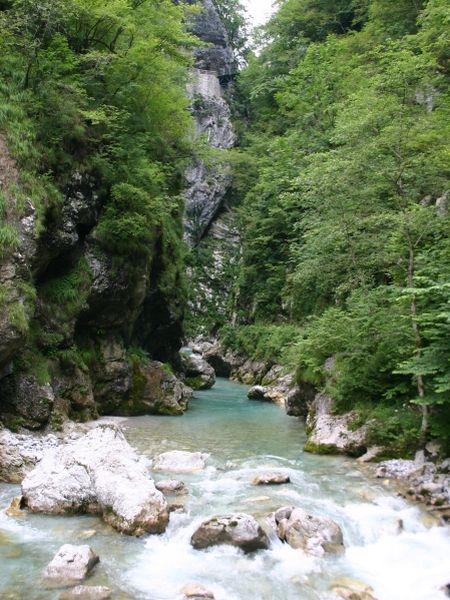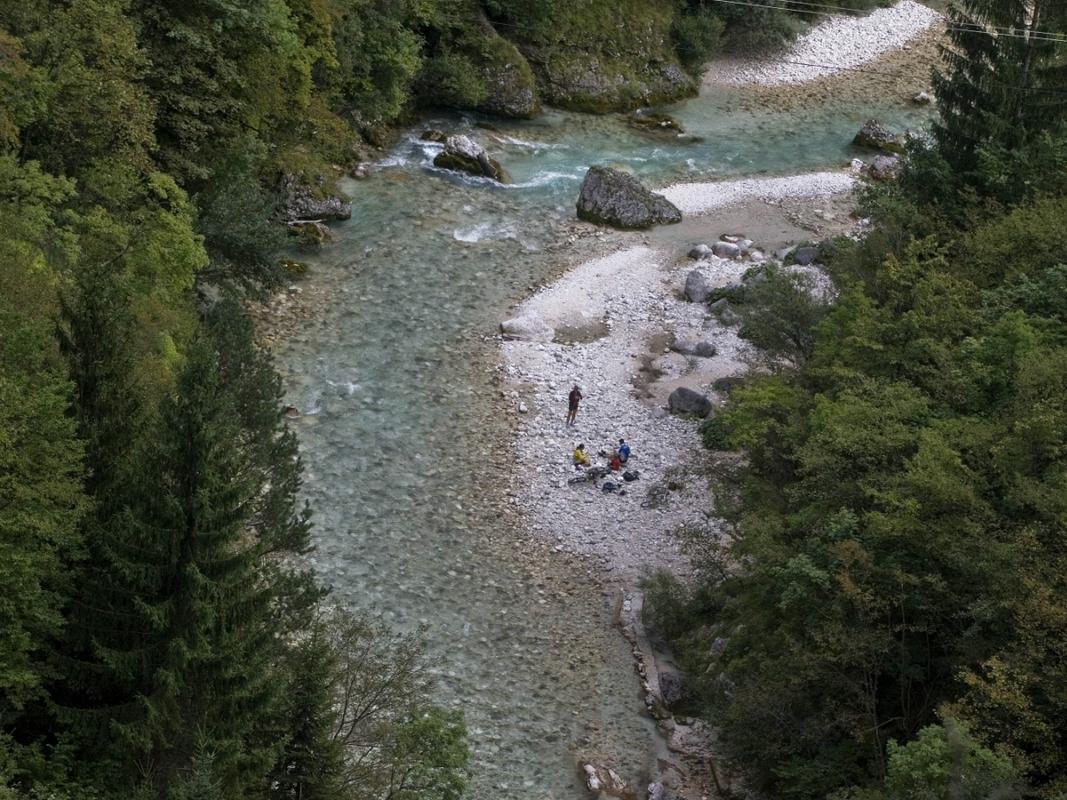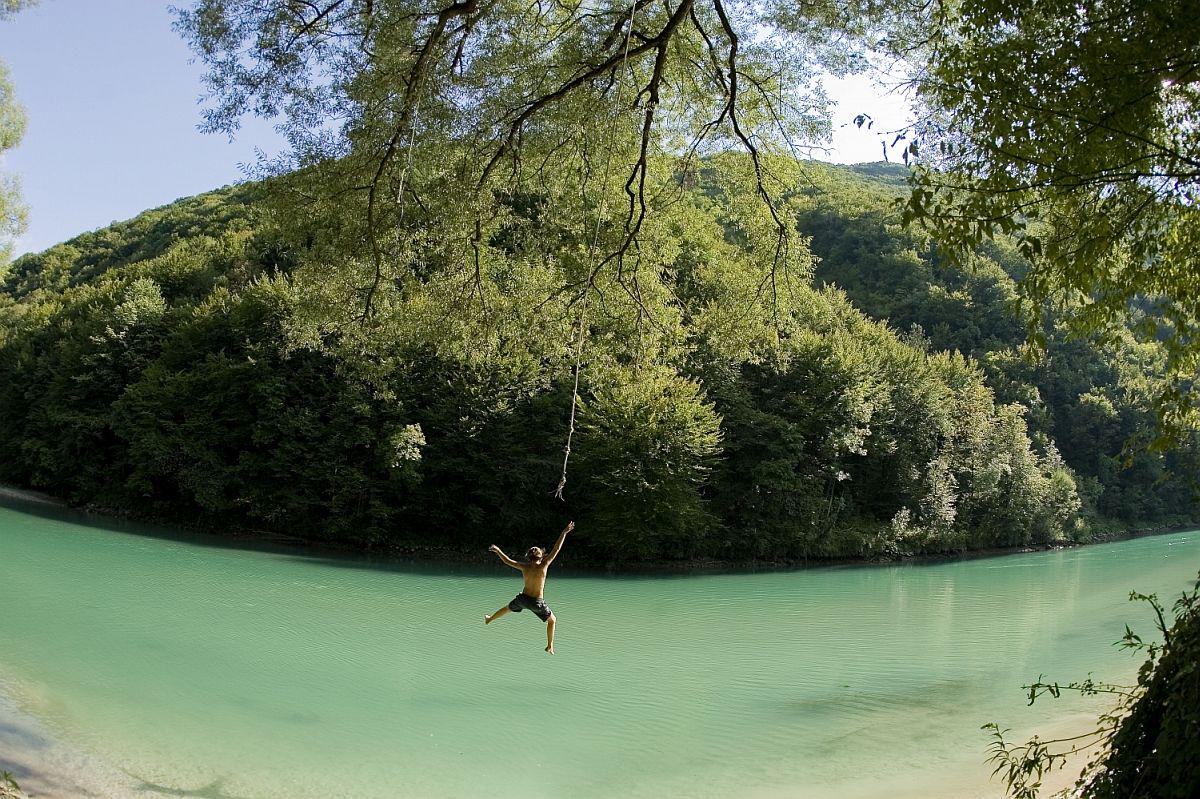

After Maribor in 2000 and Idrija in 2011, Tolmin is the third Slovenian Alpine Town of the Year. It convinced the jury that it was strengthening its Alpine identity in a context of sustainability and innovation.


Alpine towns that put into practice the economic, environmental and social interests of the Association in accordance with the principle of equality, as stipulated in the Alpine Convention, have been competing for the title Alpine Town of the Year since 1997. The title rewards a town’s implementation of sustainable development policies,and encourages it to continue its activities in this direction. The towns that have been awarded are connected through the Alpine Town Association. Currently, this network consists of 15 municipalities in Austria, France, Italy, Germany, Slovenia and Switzerland.
After Maribor in 2000 and Idrija in 2011, Tolmin is the third Slovenian Alpine Town of the Year. It convinced the jury that it was strengthening its Alpine identity in a context of sustainability and innovation.
Natural and cultural potentials Tolmin is situated between the rivers Soča and Tolminka and at the junction of the Soča valley, the Baška grapa valley and the Idrijca valley. Adorned by a historic centre, the town has a general high school, an excellent library and rich sports infrastructure. The Tolmin Museum, which tells the story of the entire Soča river basin, is also important. The Tolmin Gorges (Tolminska korita), the most important natural attraction of the Tolmin municipality and the lowest entry point into the Triglav National Park, are located near Tolmin. Throughout the region, there are many relics from World War I. Certainly the most beautiful monument from that period, which was designated as a European Heritage Site in 2006, is the Memorial Church of the Holy Spirit at Javorca, built on a magnificent site above the Polog mountain pasture in the Tolminka valley by Austro-Hungarian soldiers in memory of their fallen comrades. On the picturesque Šentvid Plateau, there is the magnificent Church of Mary’s Visitation, one of the latest works by architect Jože Plečnik. Trebuša is known for its remote farmsteads, narrow valleys and waterfalls, while the tradition of transhumance is kept alive on surrounding mountain pastures, where the famous Tolmin cheese is produced.
The awareness of natural and cultural potentials represents one of the bases of Tolmin’s planned course of development. Among other things, this is demonstrated by the successful, internationally recognised project of repopulation of the autochthonous Soča trout and the inclusion of the Tolmin municipality into the UNESCO Julian Alps Biosphere Reserve. The jury that awarded Tolmin the title of Alpine Town of 2016 pointed out that “Ecological farming and the development of traditional farming methods create the basis for the promotion of sustainable tourism and the creation of new opportunities for the younger population.” The municipality of Tolmin says that Tolmin will, in cooperation with other Alpine Towns of the Year, mountain and environmental organisations and the local population, use the title for the implementation of several projects related to green economy and social responsibility. This year they hope to analyse and create new opportunities for supporting people of all ages, but particularly the young, in the implementation of their own initiatives. At the same time, Tolmin also wants to prove that environmental and economic efforts can be successfully integrated with social responsibility.
Together for a greener future In Tolmin, the potential of the local population has always been highly recognised, particularly in the field of climate protection. After Tolmin was awarded the title of Alpine Town of 2016, the Tolmin municipality announced a public call to collect ideas and suggestions for activities that could be carried out within the framework of events to mark this important title. Local citizens and other representatives of the interested public actively participated in the preparation of the programme for 2016, as the municipality wishes to enable them to express their wishes and suggestions. The activities will be carried out in the fields of green economy and social responsibility with main topics covering young people, the future of the Alps, sustainable mobility and tourism.
The central desire and concern of the Alpine Convention is to integrate measures for the protection of the Alpine region with sustainable and long-term regional development. The Alpine towns, including Tolmin, wish to prove that environmental protection and economy are not mutually exclusive but, instead, complement one another and are oriented towards a greener and friendlier future.
Alpine Convention
The Alpine Convention is an international treaty signed by Alpine countries (Austria, France, Italy, Liechtenstein, Monaco, Germany, Slovenia and Switzerland) and the European Union and aimed at fostering sustainable development in the Alps. With their biodiversity, water and wood resources, the Alps are the natural, cultural and economic environment of and home to almost 14 million people. They are also an attractive tourist destination for approximately 120 million visitors annually.
By signing the Alpine Convention in 1992, Slovenia committed itself to the protection and sustainable development of the Alps in cooperation with other Alpine countries, while observing the economic and cultural interests of the local population. In Slovenia, the Alpine Convention applies on the territories of 62 municipalities, of which 45 are fully and 17 partially included. The Alpine Convention is also actively involved in the preparation of the EU Strategy for the Alpine Region, which connects mountainous areas and plains with large Alpine cities. With its experience, the Alpine Convention can contribute to the preparation of sustainable development projects for mountainous areas.
Slovenia hosting the launch conference of the EU Strategy for the Alpine Region (EUSALP) On 28 July 2015, the European Commission officially launched the EU Strategy for the Alpine Region, which is the fourth EU macro-regional strategy. The Strategy enables closer cooperation in the fields of research and innovation, SME support, mobility, tourism and energy resources management. The Strategy concerns the cooperation of 5 EU Member States (Germany, France, Italy, Austria and Slovenia), Liechtenstein and Switzerland, and involves 48 regions. During preparations for the Strategy, Slovenia recognised its interest particularly in the fields of tourism and the creative and cultural industries, as well as in agriculture, forestry, food and fisheries, especially in relation with rural development in the Alpine region. The Alpine region sees its main challenge in the preservation of natural environment and cultural diversity, which are essential elements of the attractiveness of the region for development investments.
In the beginning of 2016, the Launch Conference of the EU Strategy for the Alpine Region will be held in Slovenia on January 25–26 in Brdo pri Kranju. The event is organised by the European Commission and the Ministry of Foreign Affairs of the Republic of Slovenia. Slovenia has also offered to undertake the role of the first presiding country of the EU Strategy for the Alpine Region.
After Maribor in 2000 and Idrija in 2011, Tolmin is the third Slovenian Alpine Town of the Year. It convinced the jury that it was strengthening its Alpine identity in a context of sustainability and innovation.

































































